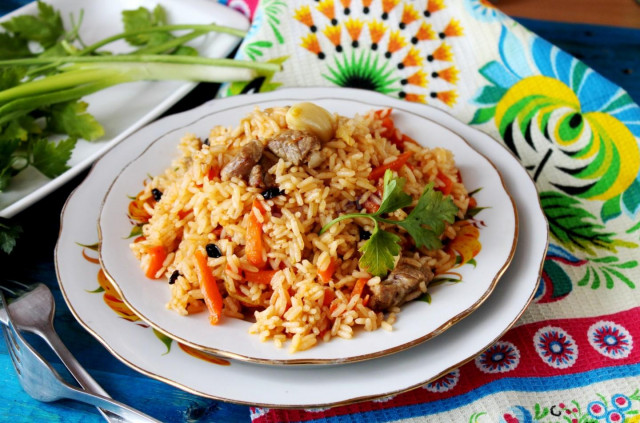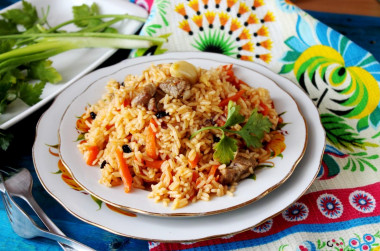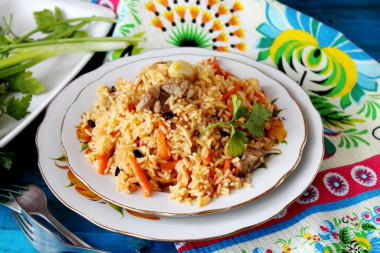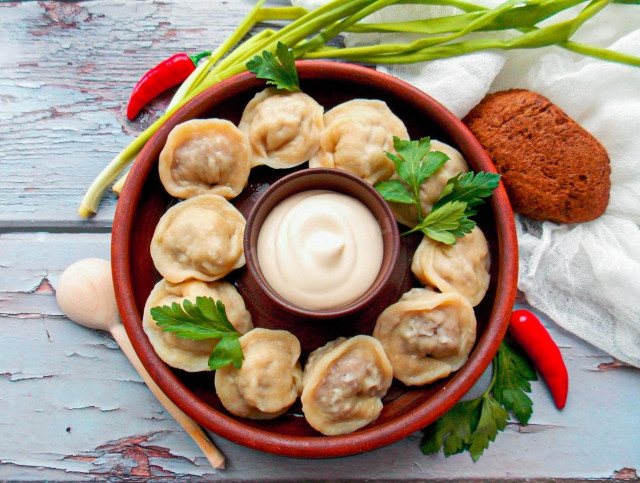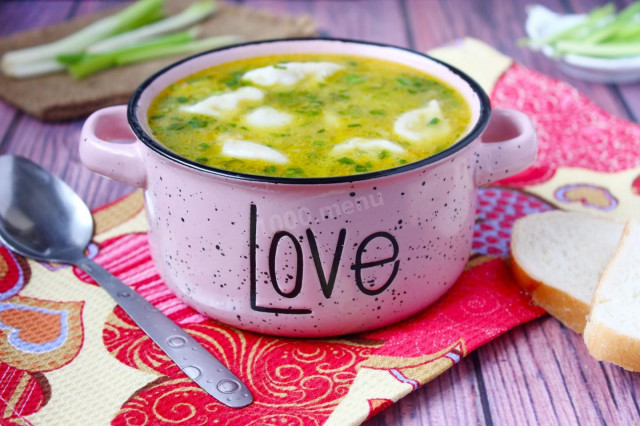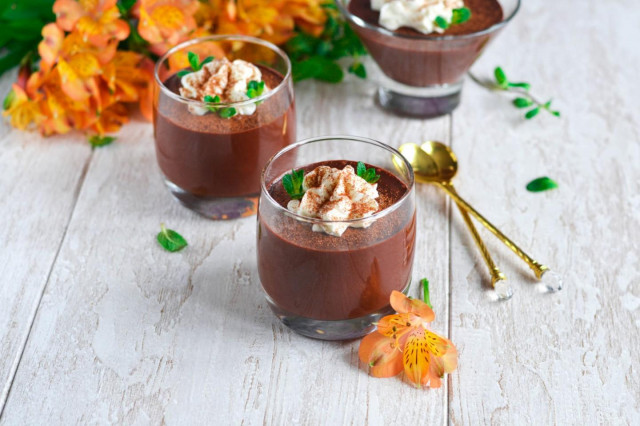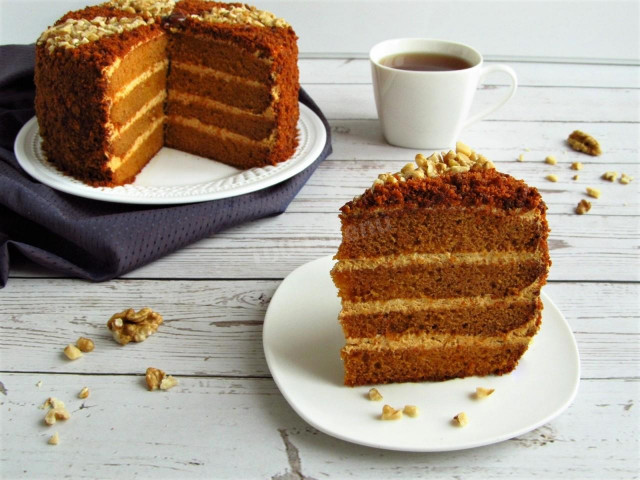Composition / ingredients
Step-by-step cooking
Step 1:
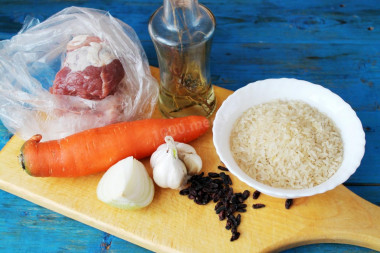
How to cook classic Uzbek pilaf with lamb? Prepare the products according to the list. I recommend using filtered water. We will need a little water to soak the barberry, and for the pilaf itself, the amount of water is indicated approximately, it is traditionally poured into the eye during cooking, so that after putting rice in the cauldron, it covers it by 1 cm (or finger thick).
Step 2:
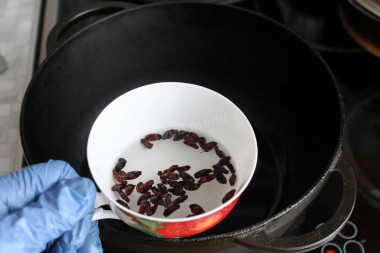
Pour boiling water over the dry barberry, let it soak.
Step 3:
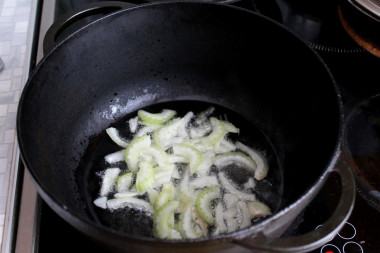
Put the cauldron on the fire, heat it up and pour the oil. In preheated sunflower oil, first fry the onion, cut into half rings.
Step 4:

Add sliced carrots. Important: traditionally carrots are cut, but many often neglect this moment and grate it on a grater. Keep in mind that it's not just about traditions, but also about the appearance and taste of the dish. Sliced carrots will retain their shape during cooking, grated on a grater will become mushy and mix with the rest of the ingredients. You can choose, but I personally like the traditional version more. Fry the vegetables.
Step 5:

Add the sliced lamb. Fry it. At this stage, the lamb does not need to be fried until it is ready, it should only be thoroughly fried on the outside.
Step 6:
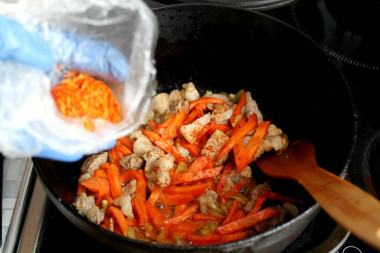
Add saffron - it can be poured in advance with boiling water or finely ground and poured into pilaf. Send turmeric there as well.
Step 7:
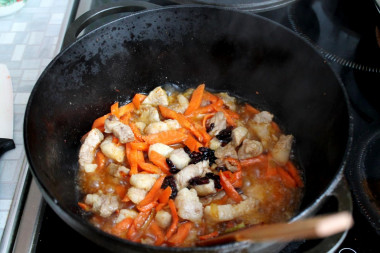
Add barberry. Pour in a glass of hot water and boil over low heat until the meat is ready (a mixture of fried vegetables with meat is called zirvak).
Step 8:
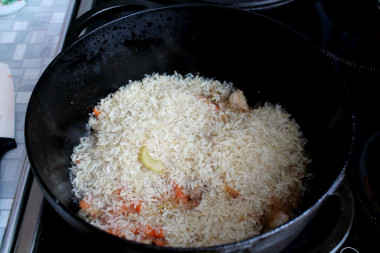
Now it's rice's turn. If you take ordinary rice, then you need to sort it out and rinse it well, then throw it on a sieve and let it drain. Pour the rice into the cauldron.
Step 9:
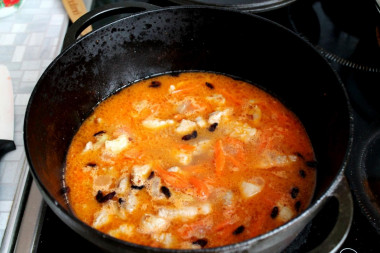
Top up with hot (just boiled) water so that it covers the rice by about 1 cm. In any case, do not mix!
Step 10:

Add the whole head of garlic to the center (only the hard base is cut off and the uppermost layers of the husk are removed, which are easily removed) or individual cloves dissected crosswise (this allows the garlic to give all the flavor to the pilaf).
Step 11:

Simmer lamb pilaf in a cauldron over low heat under a lid until all the water is absorbed. It is not necessary to stir the pilaf, otherwise the rice will turn into porridge.
Step 12:

The finished pilaf can be removed from the heat and, if desired and if there is time, let it brew under the lid for 15-20 minutes. This will only make it tastier. Serve the lamb pilaf, beautifully laid out on a large platter. Bon appetit!
Lamb pilaf in a cauldron is a common recipe for Uzbek pilaf, which has become a classic.
Now pilaf is cooked in a slow cooker, and in the oven, and in a frying pan, and even in a saucepan. But you always need to take into account the peculiarities of cooking. In the cauldron, pilaf turns out to be the most crumbly and fragrant because of its thick walls and material (usually cast iron).
Caloric content of the products possible in the composition of the dish
- Lean mutton - 169 kcal/100g
- Fat mutton - 225 kcal/100g
- Lamb - brisket - 533 kcal/100g
- Mutton - ham - 232 kcal/100g
- Lamb chop on a bone - 380 kcal/100g
- Lamb shoulder - 284 kcal/100g
- Mutton - dorsal part - 459 kcal/100g
- Carrots - 33 kcal/100g
- Dried carrots - 275 kcal/100g
- Boiled carrots - 25 kcal/100g
- Garlic - 143 kcal/100g
- Turmeric - 325 kcal/100g
- Saffron - 310 kcal/100g
- Zira - 112 kcal/100g
- Barberry - 29 kcal/100g
- Salt - 0 kcal/100g
- Water - 0 kcal/100g
- Onion - 41 kcal/100g
- Sunflower oil - 898 kcal/100g
- Refined sunflower oil - 899 kcal/100g
- Paprika - 289 kcal/100g
- Steamed rice - 123 kcal/100g

